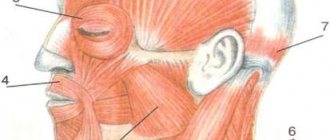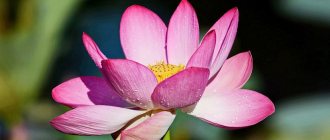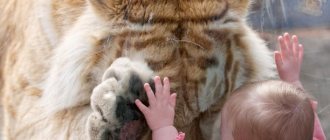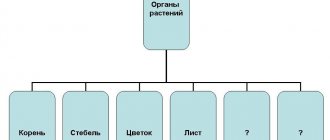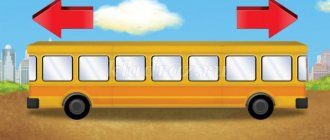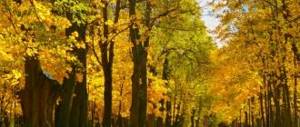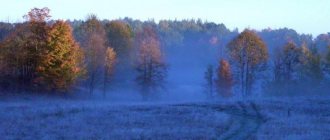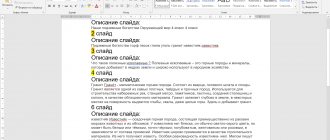Progress of observation:
Playful sparrows, like lonely children, huddled near the window.
The teacher asks the children questions.
· What wintering birds do you know?
· Is it difficult for birds to find food in winter?
· What do you need to make for food?
With the onset of cold weather, wintering birds (sparrows, crows, magpies, pigeons, tits and bullfinches)
are approaching human habitation. A difficult time has come for the birds: they cannot find food.
The wheat and rye harvest was removed from the fields, the insects disappeared (fell asleep)
. Therefore, birds fly closer to people, hoping that they will feed them. We will feed the birds in autumn and winter so that they do not die of hunger.
Titmouse observation
Goals: to expand children’s ideas about the appearance of the titmouse, its habits, and habitat; take care of wintering birds.
Weather diary
Weather Diary
Primary school teacher: Guseva T.O.
The purpose of a weather diary
A weather diary is a calendar in which the factors that determine changes in the world around us are listed day by day:
- air temperature;
- wind strength and direction;
- humidity;
- cloudiness;
- Atmosphere pressure.
How to do
To make the diary beautiful, neat and easy to navigate, the work should be properly organized. For this you will need:
- pens of different colors;
- felt-tip pens or gel pens;
- a simple pencil;
- ruler.
There are two most convenient ways to work with an observation diary:
- The page is divided into 5 vertical columns. They include observational indicators (air temperature, humidity, etc.). Next, divide the field into 7 horizontal lines according to the number of days of the week. At the top we sign the month and date range.
2. The page is divided into 6 columns, the first of which is the date, and the rest are weather data.
A child can show his creativity by designing the cover of such a notebook.
Another necessary nuance: the first page of the diary should be devoted to deciphering the symbols that will be used in the calendar.
Devices.
- To maintain a weather calendar, special instruments are needed to obtain objective data:
- outdoor thermometer;
- compass;
- aneroid barometer (this device shows not only atmospheric pressure, but also air humidity);
- weather vane (to determine wind direction);
- precipitation gauge
Compass
Vane
Aneroid barometer
- In order not to buy a weather vane, you can use the old proven method: we stand facing north, wet our finger and lift it up - on which side the finger dries faster - in that direction the wind blows.
We use a small bucket as a precipitation gauge, which is filled with rainwater or snow per day. After this, pour the liquid into a measuring vessel and divide the indicator by 10 - this is the amount of precipitation in millimeters of water layer
The main condition for keeping a weather diary is to record indicators at the same time.
At the same time, you should not rely on your memory and “accumulate” data: it is better to enter values immediately after measurement, for example, daily at 15.00.
- It's better to start with air temperature. Just make sure the thermometer is hanging in the shade, otherwise the readings will be incorrect.
- Humidity and pressure are then recorded.
- After that, we look out the window and determine the cloudiness.
- We record data on the wind direction and amount of precipitation in the diary.
If there is no data (for example, precipitation), then we put a dash in the column. You can fill in the missing information with a weather forecast on the Internet.
Write down the date of the first thunderstorm.
Performance:
The first spring thunderstorms can be observed in early May. This phenomenon is not common, but not rare either. Let's write down the date of the first thunderstorm.
Task 4.
Observe and write down when they bloomed:
Performance:
Coltsfoot. This plant is a primrose and is one of the first to bloom in the spring. Often coltsfoot blooms already at the end of March, but sometimes the plant begins to bloom in April.
Willow. Willow also blooms very early, usually in mid-April.
Dandelion. This plant also begins to bloom quite early, when lawns are clear of snow. In most regions, dandelion blooms begin in mid-April.
Apple tree. Apple trees bloom at different times each year. It is not tied to a specific date, because for it to start, the air temperature must be at 16-18 degrees for several days in a row. The apple tree may begin to bloom at the end of April, the beginning of May, or even the middle of it.
Lily of the valley. Flowering of lily of the valley can begin at the end of April, but more often it happens in May and lasts for more than a month.
Task 5.
Observe and write down when the leaves began to bloom:
Performance:
Hazel. Hazel leaves begin to bloom in mid-April, but in more northern regions they do not appear until May. Let's record the date of appearance of the first leaves of the hazel tree.
Birches . This tree also blooms its leaves in late April - early May. Let's write down in our diary the date the first leaves appeared on the birch tree outside the window.
Apple trees. Apple tree leaves, depending on the region, may bloom in late April or early May.
Duba. Some types of oaks leaf out quite early, in mid-April, but others, the so-called winter oak, don't leaf out until early to mid-May. Let's note a specific date in the diary.
Task 6.
Mark the first time this year you were able to see:
Performance:
Butterfly. The first butterflies appear very early in the spring, as soon as the sun begins to noticeably warm the air. These butterflies overwinter in attics, tree hollows and other secluded places, and fly out only when they feel warm. Usually the first butterflies can be seen already in March. These are urticaria, peacock's eye, lemongrass.
Starling. Starlings are one of the first spring birds in our area. Already at the end of March they fly to their homeland and occupy their old birdhouses.
Swallow. Swallows are more heat-loving birds and therefore they arrive only in late April-early May, when it gets really warm outside.
Task 7.
Write down what other animals you saw in the spring.
Performance:
In the spring you can see in parks and forests both those animals that did not go into hibernation and those that woke up after it.
It is just as easy to meet a squirrel, chipmunks and marmots appear. You can meet waking snakes, and by the end of spring, amphibians, frogs and toads.
Task 8.
Other observations.
Performance:
Let's record those observations of changes in living and inanimate nature that we were able to observe this spring.
For example: the sunny day increases, the day begins to exceed the duration of the night, the sun rises higher and higher above the horizon. Animals that hibernated during winter wake up - bears, hedgehogs, badgers, marmots.
Task 9.
Compare your notes with those made last spring. Highlight similarities and differences.
Performance:
Similarities: daylight hours increase, snow melts, flowers bloom, leaves appear on trees, migratory birds return, and animals awaken from hibernation. Rivers open up from ice and floods occur. There are thunderstorms in spring.
Differences: weather conditions on the same days in different years are not the same. Temperatures and weather patterns vary.
Observations in nature in summer
Exercise 1.
Learn to recognize flowering herbaceous plants. Write down which plants you were able to identify.
Performance:
In summer, almost all herbaceous plants bloom, there are a lot of them. It is enough to identify a few of them.
For example, it is easy to identify by the flowers a dandelion or a cornflower, which is similar to a chamomile, but grows in a meadow. It's easy to recognize a blooming bluebell or purple cockerels of mouse peas, it's very easy to recognize the pink balls of clover or the spikes of bluegrass. The white heads of the yarrow are clearly visible.
Let's write down a few names of flowering plants.
Task 2.
Observe when the linden blossoms began and ended this year. Write down approximate dates.
Performance:
Linden is almost the only tree that begins to bloom in midsummer. The beginning of its flowering occurs in the second half of June, and the end of flowering in the first half of July.
Task 3.
Learn to recognize mushrooms and berries. Write down what mushrooms and berries you picked in the summer.
Performance:
To collect mushrooms, you should go to the forest. There, in the second half of summer, you can collect a rich harvest of summer mushrooms. Among them may be boletus, boletus, boletus, russula, saffron milk caps and chanterelles.
Summer berries can be collected not only in gardens, but also in the forest or meadows. These can be strawberries, stone fruits, raspberries, blackberries, and wild currants.
Task 4.
Learn to recognize animals and observe them. Write down what animals you were able to see in the summer:
Insects. There are a lot of insects in the summer and it is very difficult not to notice them. These are annoying flies and mosquitoes, beautiful butterflies and dragonflies, formidable beetles and bees, and hard-working ants.
Birds. There are also significantly more birds in summer than in winter. You can easily see even in the city such representatives of birds as the cuckoo, woodpecker, warbler, kite, rook, nightingale, oriole, blackbird.
Animals. Even in city parks, life is in full swing in the summer, and anyone can see squirrels, chipmunks, hedgehogs, and even foxes in natural conditions. Well, in the forests you can find deer, wild boars, bears, raccoons, beavers, muskrats and many other animals.
Other animals. Here you can name representatives of other animal species that you are lucky enough to observe. For example: lizards, snakes, frogs and toads, newts, snails, maybe shells and jellyfish, various fish. Task 5.
Other observations
Performance:
Here we will tell you about what else interesting things you were able to observe this summer.
This could be an unusually large hail or tornadoes, which are increasingly occurring in Russia. These may be heavy rains.
Be sure to indicate the length of the day, which is maximum in summer. You can talk about what baby animals you were able to see.
Task 6.
Compare your notes with those made last summer. Highlight similarities and differences.
Performance:
Similarities: Summer is the hottest time of the year, when the nights are shortest and the days are longest. In summer there is no snow, but there can be hail, and hail occurs after the most intense heat. The temperature in summer never drops below zero, rivers can dry up, and drought can occur.
Differences: weather conditions on the same days in different years are not the same. Temperatures and weather patterns vary.
